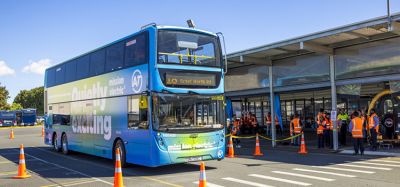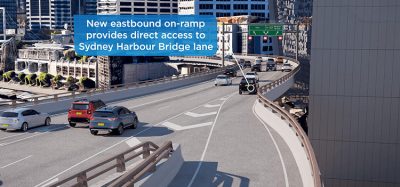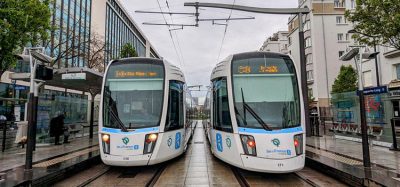Crimes against passengers: Responding to theft, robbery, assault and indecent assault
- Like
- Digg
- Del
- Tumblr
- VKontakte
- Buffer
- Love This
- Odnoklassniki
- Meneame
- Blogger
- Amazon
- Yahoo Mail
- Gmail
- AOL
- Newsvine
- HackerNews
- Evernote
- MySpace
- Mail.ru
- Viadeo
- Line
- Comments
- Yummly
- SMS
- Viber
- Telegram
- Subscribe
- Skype
- Facebook Messenger
- Kakao
- LiveJournal
- Yammer
- Edgar
- Fintel
- Mix
- Instapaper
- Copy Link
Posted: 23 June 2006 | Russell Morgan and Martha J. Smith | No comments yet
The response strategies discussed in this article provide a foundation of ideas for addressing particular problems. These strategies have been used in practice and/or suggested by researchers, and a small number have been evaluated. Several of these strategies may apply to the particular problems in your community. It is critical that you tailor responses to local circumstances, and that you can justify each response based on reliable analysis. Any intervention strategy should seek to address as many known contributing factors as possible. This is likely to mean a package of responses is required.
This article considers situational crime prevention responses that may be effective in reducing one or more categories of crime, although you will often need to use the response in a different way for each specific crime category and for different times and locations. The responses discussed below work by increasing the effort needed, increasing the risks, reducing the rewards, reducing provocations, or removing excuses for crime.
The response strategies discussed in this article provide a foundation of ideas for addressing particular problems. These strategies have been used in practice and/or suggested by researchers, and a small number have been evaluated. Several of these strategies may apply to the particular problems in your community. It is critical that you tailor responses to local circumstances, and that you can justify each response based on reliable analysis. Any intervention strategy should seek to address as many known contributing factors as possible. This is likely to mean a package of responses is required. This article considers situational crime prevention responses that may be effective in reducing one or more categories of crime, although you will often need to use the response in a different way for each specific crime category and for different times and locations. The responses discussed below work by increasing the effort needed, increasing the risks, reducing the rewards, reducing provocations, or removing excuses for crime.
The response strategies discussed in this article provide a foundation of ideas for addressing particular problems. These strategies have been used in practice and/or suggested by researchers, and a small number have been evaluated. Several of these strategies may apply to the particular problems in your community. It is critical that you tailor responses to local circumstances, and that you can justify each response based on reliable analysis. Any intervention strategy should seek to address as many known contributing factors as possible. This is likely to mean a package of responses is required.
This article considers situational crime prevention responses that may be effective in reducing one or more categories of crime, although you will often need to use the response in a different way for each specific crime category and for different times and locations. The responses discussed below work by increasing the effort needed, increasing the risks, reducing the rewards, reducing provocations, or removing excuses for crime.
Increase the effort needed to engage in crime against passengers
Controlling tools or other facilitators used in committing offences, regulating access to transport facilities, and physically protecting targets, all increase the effort of offending. Increasing the effort may not always stop the behaviour completely, but it will discourage some offenders, and reduce the frequency of the behaviour for others. In time, however, that offender, or others, may expend the additional effort required, adapt their methods, or otherwise attempt to counter these methods. The most successful prevention methods are those that are less able to be circumvented. Making crimes more difficult to commit may also increase the perceived risks involved.
Target harden
- Encouraging passengers to protect their valuables by placing valuables deep in pockets or bags may increase the difficulty of thefts – or cause the thieves to move on.
- Warnings alerting passengers to the risk of theft can be delivered through public address announcements, service information dot-matrix displays and posters.1
Control access to facilities
- Checking tickets is one measure that can be used to keep some offenders away from some parts of the transport system. Research has consistently linked fare evasion and more serious crimes, such as robbery.2
Screen exits
- Where a ticket is required to exit the transport system this may make it less likely that offenders will enter illegally.
Deflecting offenders
- Separating waiting passengers from other members of the public (e.g. by installing shelters or barriers) makes it more difficult for potential thieves to sneak up on them.3
- Providing separate areas for females on public transport may help reduce the number of indecent assaults. This response may only be effective where indecent assaults are highly concentrated at specific times and locations and are directed primarily at women.
Control facilitators
- Stations and areas around stations can be modified to make them less comfortable or attractive for those who are loitering as part of their strategy for selecting victims for robbery or pick-pocketing.
Increase the risks of engaging in crime against passengers
The following responses are designed to reduce the incidence and severity of crimes against employees by increasing the risks of crime, with detection being the primary risk focused on by the prevention measures discussed here. Many of these measures also act to improve the response to incidents.
Extend guardianship
- Encourage passengers to take routine precautions against victimisation, such as avoiding deserted places in and around transport facilities and on their journey home.
- Installing passenger alarms, emergency telephones and intercoms for passengers both at stations and on vehicles may allow staff to be more capable guardians in potentially dangerous situations, increasing the perceived danger of detection among potential offenders.
- Encouraging local residents and retailers (in and around stations and bus stops) to look out for crimes occurring in their area – either formally (through a campaign) or informally through changes in the area to make it more attractive and desirable to defend – may increase the number of people taking an active role in crime prevention around transport stations and stops.
- Concessions offered by public transport companies for off-peak travel, especially two-for-one tickets, increase the number of people on the system who can look out for crime events.
Assist natural surveillance
- Changing the design of facilities by improving lighting and sightlines can increase surveillance opportunities in facilities and stations thereby increasing the perceived risk of detection.
- Blocking off parts of stations, reducing the number of carriages available on trains and introducing passenger waiting areas at stations at off-peak times each helps to increase surveillance provided by other passengers as well as facilitating supervision by staff directly or through CCTV.
- Crowding, and the accompanying jostling among passengers, that facilitates thefts and indecent assaults can be reduced by:
- designing walkways and escalators to deposit passengers at more than one part of the platform;4
- increasing the size of passenger waiting areas or moving them to areas with greater space;5
- increasing the number of service vehicles at high-volume times;
- limiting the number of passengers entering stations or the number of passengers boarding vehicles; and
- discount pricing for travel during off-peak hours to encourage time shifting.6
- Placing bus stops near open shops can provide a great deal of natural surveillance for passengers getting off buses late at night.
Reduce anonymity
- Enforced wearing of school uniforms and keeping a registry of the uniforms can put offenders on notice that staff will be able to trace them to their schools.
Utilise place managers
- Installing CCTV on vehicles and at facilities may increase offenders’ perceived risk of detection.
- Introducing special transport wardens (or ‘couriers’) on vehicles and stations has been found effective in reducing the harassment of passengers on public transport systems (see below).8
Strengthen formal surveillance
- The presence of additional employees, police or security personnel on vehicles and at facilities – and as escorts from stations to commuter car parks – can reduce even serious crime, as offenders may perceive a higher risk of detection or apprehension (see below).
Reduce the rewards of engaging in crime against passengers
Offenders commit crime because of its rewards. Reducing the presence, accessibility, quantity, quality or duration of these rewards, disrupting illegal markets, and concealing or removing victims and targets all reduce the benefits of criminal behaviour. The group of responses discussed in this section may apply to more than one crime or may be focused on a particular crime problem at a particular time and place.
Conceal targets
- Passengers should be warned to conceal their valuables as well as securing them. This includes not letting thieves know where their valuables are.
Remove targets
- Providing up-to-date service-running information, particularly about service delays, may help passengers to spend less time in insecure locations, such as deserted bus stops or platforms.
- Clear signs and maps showing where bus stops and other area amenities are located can help passengers leave stations and bus stops rapidly, in the right direction, and looking as if they know where they are going.
- Moving bus stops away from pubs, clubs, and off-licences should help remove them as targets for harassment and more serious crimes.9
- Allowing passengers to hail vehicles or request stops at additional locations off-peak10 may help to minimise the amount of time passengers spend lingering in insecure locations, such as deserted bus stops, and may reduce the distance they travel to their homes late at night.
Disrupt markets
- Signs can be used to gain passenger assistance in closing down shops that buy or unblock stolen mobile phones or other hot products.
Reduce the pressures and provocations for crime against passengers
Some situations may make it more likely for a crime to occur because they contain factors that increase the frustration or stress felt by a potential offender or otherwise arouse his or her emotions (assault) or because they provide examples of behaviours that can be copied by potential offenders. The measures discussed here are designed to be effective at a particular time and place and are not aimed at affecting overall offender motivation to commit an assault.
Reduce frustrations and stress
- Providing information about service delays and alternative routes may reduce passenger frustration.
Avoid disputes
- Controlling crowds by separating rival fans as they travel to and from sporting events may help prevent assaults on passengers – both among fans and between fans and other travellers.
- In Belgium, specially trained young people are used on buses to help prevent conflicts between passengers by mediating disputes.11
Discourage imitation
- Persuading media not to publish details of crimes against passengers, particularly about new ways to gain access to passengers’ valuables or about vulnerable places in the transport environment, may limit imitation.
Remove the excuses for crime against passengers
The following techniques are situational reminders or constraints that make it more difficult for offenders to adopt excuses allowing them to offend without having to overcome or ignore the wrongness or other consequences of their behaviour. A range of techniques can be used, such as setting rules, posting instructions and alerting conscience, that usually depend upon publicising the relevant information in the settings where crime is likely to take place. Public address announcements may be used for the same purposes.
Alert conscience
- Posting notices about the unacceptability of the crime can be used. For example, young people may be informed of the potential long-term consequences of assault.
Control alcohol
- Adopting byelaws that limit the sale and consumption of alcohol on vehicles and at the station may prevent some offenders, particularly those who have not arrived already intoxicated, from using alcohol as an excuse for offending.
This article is an extract from the publication ‘Secure and Tranquil Travel Preventing Crime and Disorder on Public Transport’, edited by Martha J. Smith and Derek B. Cornish (School of Community Affairs, Wichita State University). It is published by Willan Publishing. For more information, please logon to: www.willanpublishing.co.uk
References
- See Stafford and Pettersson (2002); DoT (1986b).
- See discussion in Smith and Clarke (2000). The association may be one of general lawlessness or related to a sequence of actions as part of a crime script.
- Poyner (1986).
- LaVigne (1997a).
- Levine and Wachs (1985).
- Smith and Clarke (2000).
- DfT (2002b).
- South West Trains has recently employed TravelSafe Officers to provide help and reassurance to passengers and employees. The BTP website (www.btp.co.uk) reported that these TravelSafe Officers work closely with BTP officers and have the power to enforce railway byelaws. The officers completed a six-week training programme, which included training in conflict management and customer service, incident reporting and police procedures. The BTP also reported on the introduction of Special Constables, to assist in policing the railways in the London South Area. These constables were recruited from existing Connex railway employees and undertook four hours of duties each week for the BTP.
- DfT (2002b).
- Block and Davis (1996); Walsh (1999).
- Summerell et al. (2002).
Related topics
Security & Crime, Vehicle & Passenger Safety
Issue
Issue 2 2006








